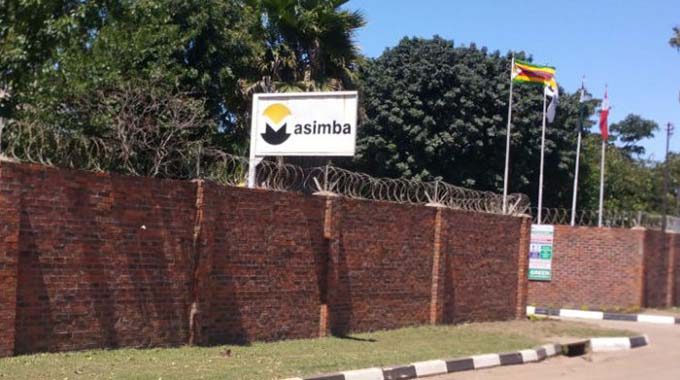Zimbabwe sets up debt redemption fund
Zimbabwe has established a debt redemption fund to facilitate the servicing of the US$338 million owed by the Reserve Bank of Zimbabwe (RBZ) due for repayment this year.
The Treasury is responsible for the debt repayment after it took over central bank’s liabilities amounting to US$1,8 billion last year. Despite the Treasury taking over part of the RBZ debt, it will remain on the central bank’s balance sheet.
According to the latest Zimbabwe Public debt report released last month, the total debt service for assumed liabilities this year stands at US$338 million, consisting of US$258 million in principal repayments and US$80 million in interest payments.
The debt redemption fund will be financed by the 25 percent foreign currency portion that exporters are required to surrender to the central bank, the report said.
“This will be augmented, where necessary, by additional measures of mobilising debt service requirements of the assumed debt,” added the report.
The debt assumption was in line with the May 2023 policy measures meant to stabilise the economy.
Under the export surrender policy, all exporters are required to surrender 25 percent of their export earnings to the RBZ at the prevailing official exchange rate.
Last year’s policy measures meant to stabilise the exchange rate and inflation included the adoption of all external loans by Treasury, funding of the
Zimbabwe dollar component of the 25 percent foreign currency surrendered by exporters, introduction of a 1 percent tax on all foreign payments, maintaining the United States dollar cash withdrawal tax at 2 percent and payment of fuel duty in foreign currency.
A technical committee comprising of members from the Ministry of Finance, Economic Development and Investment Promotion and the central bank was established to validate and reconcile the debt before it was assumed by Treasury, the report said.
In addition, the Treasury is exploring the modalities for restructuring some of the assumed RBZ liabilities, taking into account the fiscal capacity and debt sustainability.
At the end of August 2023, the RBZ’s balance sheet showed US$3,6 billion in liabilities, primarily stemming from running facilities assumed from the Treasury in 2023.
These consist rubbing facilities of US$1,2 billion from multilateral and regional banks and US$604 million from non-multilateral financial institutions.
Other liabilities include US$376 million owed to South African Airways, Trafigura, Equatorial Guinea (strategic imports), ASP Marketing and commodity trading firm Holbud.
Liabilities related to private sector blocked funds amounted to US$414 million, bilateral banks, US$121 million, multilateral regional banks (US$701 million) and other financial institutions (US$127 million).
The payments of external debt are intended to unlock disbursements for ongoing projects while token payments will continue to be made to international financial institutions (IFIs) and Paris Club creditors.
The approach aims to maintain engagement and facilitate potential future debt restructuring.
In nine months to September last year, the Government, made external debt service payments amounting to US$55,6 million for the active portfolio, legacy debts and token payments.
To support and trigger disbursements for ongoing projects and programmes, the Government also made payments to active portfolio creditors amounting to US$26,4 million over the same period, the report shows.
In addition, the Government made token payments to all International Financial Institutions and Paris Club creditors amounting to US$10,7 million over the same period.
The overall total stock of the external debt decreased from US$12,8 billion in December 2022, to US$12,7 billion in September 2023.
This was mainly due to the decrease in liabilities on the RBZ balance sheet by US$684,8 million. Out of the total bilateral and multilateral external debt amounting to US$9,1 billion, debt denominated in Euro (EUR) constitutes 31 percent.
The appreciation of the US dollar against the EUR (from December 2022 to September 2023) reduced the bilateral and multilateral external debt component by US$37,9 million.
This reduction was however, offset by an increase in penalties of US$227,6 million during the same period. An additional increase in total external debt resulted from disbursements, including on the US$400 million from Afreximbank.
Of the bilateral and multilateral debt amounting to US$9,1 billion, US$7 billion or 76 percent are principal arrears, interest arrears and penalties.
Bilateral external debt comprising of Paris and Non-Paris Club creditors amounted to US$6 billion, with principal arrears, interest arrears and penalties amounting to US$4,4 billion or 74 percent.
The five biggest Paris Club creditors are Germany, France, United Kingdom, Japan and the US, with a combined external debt stock amounting to US$2,9 billion, accounting for 74 percent of the total Paris Club external debt.
Within the Paris Club external debt portfolio, penalties for these five biggest creditors accounts for 75 percent (US$1,5 billion) of total Paris-Club penalties. China is the biggest non-Paris Club creditor accounting for 95 percent of the external debt of US$2 billion.
China’s stock of total external debt at US$2 billion, is lower than Zimbabwe’s total external debt owed to the five biggest Paris Club creditors, namely, Germany, France, United Kingdom, Japan and the USA.
Non-Paris Club loans, including loans from China were contracted after year 2000, while Paris Club loans were contracted prior to year 2000, when the country started to accumulate external debt payment arrears on its debt. – Business Weekly.










